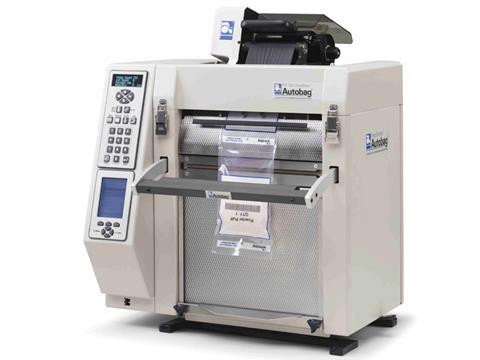
In this feature, Duncan Hall, UK sales and marketing manager at Automated Packaging Systems, explores how businesses can benefit from the latest innovations and technologies in packaging.
There is a misconception among some workers and companies that artificial intelligence (AI) is a concerning concept; even the words 'automation' and 'robotics' stir feelings of apprehension and unease around the future of the workforce.
However, with many industries currently feeling the pressure of a national labour shortage, according to a study by the British Chambers of Commerce (BCC), new technologies, such as automation, should be viewed as an opportunity rather than a threat.
The latest innovation trends and opportunities are revolutionising the packaging industry and providing companies with a solution to the shortage in available labour. Not only this, but new technology can complement current workers' skillsets, giving them the chance to upskill and take advantage of a broader range of career opportunities.
So, what options are there for businesses looking to automate their packing process, and what other benefits will they receive as a result of embracing new technologies?
The importance of researching packaging requirements
Investing in the most suitable automated packaging equipment and machinery enables companies to optimise productivity and provide a constant product output. This is particularly beneficial during peak periods, as it makes it easier to meet increased customer demand.
There are a range of bagging machines available that increase productivity and further improve efficiencies, but as every company's needs are unique, it is important that companies work closely with the packaging manufacturer to ensure their individual issues and requirements are understood and evaluated.
From concept to completion, every component of the packaging line should be considered, including machinery, material, service and support. In most cases, the return on investment (ROI) for bagging machines is less than one year.
Choosing the right bagging machine
Semi-automated solutions are sufficient for many companies and can speed up the packing process by up to four times, optimising labour availability.
Autobag bagging machines utilise a pre-formed bag on a roll system and are suitable for a wide range of applications, particularly where the quality of the pack presentation needs to be of a high standard.
There are also machines available that feature advanced thermal transfer imprinters, positioned directly over the next bag to be loaded, enabling labels to be printed directly on to bags.
However, if a business's packing process is more sophisticated and requires pre-set batch quantities in each bag, for example, a fully automated solution is recommended.
Many semi-automated solutions can be easily integrated with counting or weighing machines to produce a fully automatic packaging system suitable for handling a wide range of industrial, technical and medical components.
The integrated system provides a highly-flexible solution that reduces cost and increases packaging productivity. Multipack packs of varying quantities can also be counted, collated and packaged using the efficient and accurate system.
The counting and conveying process is straightforward: a bulk supply of product is placed on the product load tray, an operator will then retrieve the required product and place it into one of the machine's pockets. The conveyor drives the product to a field eye detection load area where the conveyor dispenses the product through the eye and into an accumulator funnel. Once all of the parts have been collated, the products are automatically sealed in a bag, while another bag is presented for loading.
Automated solutions in action
One business, Gripple, has experienced the benefits of an integrated packaging system first-hand. Previously, producing its hanger kits had always been a six-stage process: wires were cut to length, finished, coiled and counted by machine, then sent to the packing area for bagging with the required number of Gripple tensioners, before being boxed in shelf packs ready for distribution.
Automated Packaging Systems recommended its desktop PS 125 OneStep bagger as it is quick, has a small footprint to sit within the wire finishing workstation, and can handle the range of bag sizes needed for all Gripple kits.
Packing at the point of manufacture with the Autobag PS 125 OneStep has removed a full step in the process of producing Gripple kits. As a result, lead times are down, less finished stock is held in store, costs have been significantly reduced, and labour has been redeployed.
Conclusion
Although there's a perception that the workforce could be displaced, there's an opportunity to evolve, adapt and fulfil new jobs, allowing the versatile and efficient packaging machinery to carry out routine, repetitive tasks, while meeting 24/7 demand.
Companies can also benefit from reduced risk of human error and will have capacity to provide continual output during labour shortages, particularly during unforeseen circumstances, such as if employees are unwell or on annual leave.
This is an exciting time for forward-thinking, savvy businesses who are constantly looking to evolve. Automating the packaging process will result in improved quality, repeatability, accuracy and productivity, and it's important that businesses invest in innovative technology to survive and thrive, and continue to support their current workforce long into the future.





















